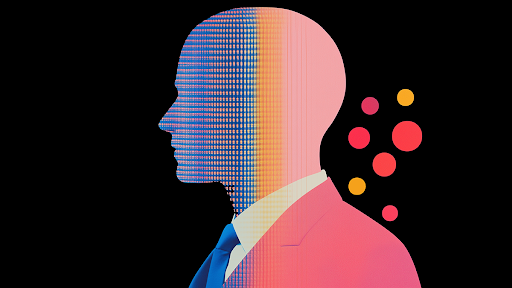The Rise of Headless CMS in Modern Web Development


In a multichannel digital world, user experience reigns supreme, and businesses must deliver world-class content across an ever-expanding menu of platforms and devices. With nearly endless options available, consumers expect to be served seamless, personalized experiences faster than you can say, “Swipe right.”
The pressure on companies to create, distribute, and manage their digital presence is (to put it mildly) intense. Enter the Headless Content Management System (CMS)—a paradigm shift revolutionizing how organizations operate online.
Heads Up! The Rise of Headless CMS
The headless CMS market is booming, underscoring its growing significance. Recent research indicates it will skyrocket from $605 million in 2022 to $3.8 billion by 2032—a compound annual growth rate (CAGR) of 22.1-22.6%.
Several key factors are driving this growth:
- Flexibility and scalability in content delivery
- Enhanced personalization capabilities
- Improved developer experience
- Cost-effectiveness and reduced infrastructure maintenance
The impact?
Approximately 63% of enterprises are already riding the headless wave, benefiting from enhanced flexibility and increased speed of digital operations.
The Shackles of Traditional CMS
Monolithic Mayhem: When One-Size-Fits-None
Traditional CMS platforms have become painfully restrictive, tightly coupling content management with presentation—a relic of the first-generation web. With 5.65 billion smartphones in use and AI transforming everything from content creation to customer service, this monolithic approach is about as useful as a chocolate teapot.
Imagine serving a gourmet meal on a paper plate—that's essentially what traditional CMS asks you to do when faced with the array of modern content platforms. The digital buffet of today is endless, from AR and VR to podcasts, mobile apps, voice assistants, IoT devices, and messaging apps. Trying to fit all these diverse needs into a one-size-fits-all CMS is like squeezing an elephant into a Mini Cooper—it won’t end well!
Outdated and Overwhelmed: The Monolithic Dilemma
Traditional CMS platforms are largely built for the first-generation web, and while they can handle the cloud, they weren’t designed that way from the ground up. As a result, they’re encountering significant challenges. With AI revolutionizing content creation, analytics, customer service, and content delivery platforms, going ‘one size fits all’ is like trying to fit a square peg into a round hole.
Racing to Keep Up: The Struggle with Traditional CMS
The digital landscape is changing faster than a viral TikTok trend, and updating your traditional CMS system to accommodate these new channels is time-consuming and frustrating. Content creators and marketers need new ways to craft unique, engaging experiences, and traditional CMS platforms are no longer flexible enough. A new generation of cloud-first headless CMS is required.
Breaking Free: The Flexibility of Headless CMS
A headless CMS decouples the content repository (“the body”) from the presentation layer (“the head”), letting you control how your content is displayed independently, with an API-first approach that exposes content through RESTful APIs. This enables developers to retrieve and present content on any device or platform—websites, mobile apps, digital touchpoints, and even AR and VR experiences.
Fueling the Surge: Why Headless CMS is Taking Over
Device Proliferation: With the explosion of smartphones, tablets, smartwatches, and IoT devices, content needs to be everywhere, all at once.
Agile Software Development: The need for speed is real. Headless CMS allows for rapid iteration and deployment across the development cycle.
Personalization Demands: Consumers expect tailored experiences, and headless CMS provides the flexibility to deliver them.
Front-end Evolution: The rise of modern frameworks like React, Angular, and Vue.js demands more flexible back-end solutions, which Headless CMS provides.
The Benefits of Losing Your Head

1. Omnichannel Delivery: Content Without Borders
Consumers hop between devices faster than a squirrel on espresso. Headless CMS allows your organization to create once and publish everywhere, ensuring a consistent brand experience across all your touchpoints.
Real-World Example: Scotiabank's Global Content Strategy
- Challenge: Managing content for six different countries in Latin America, each with specific needs and languages.
- Solution: Implemented Agility CMS as a headless solution, creating separate content instances for each country.
- Results:
- Consistent brand experience across multiple countries and platforms
- Flexibility to adapt to local needs
- Ability to rebrand and rebuild websites and reuse existing content
- Significant savings in time and resources
2. Improved Performance and Scalability: Speed Matters
In the digital realm, speed is currency, and headless architectures offer big gains:
- Faster Page Loads: Split the front and back end for quicker content delivery.
- Streamlined Data: API-driven communication that fetches only what's needed, keeping your site lean and fast.
- SEO Boost: Speedy loads and smooth user experiences make search engines happy.
- Flexible Growth: Scale frontend and backend separately for better performance and cost control.
- Handles Traffic Spikes: Modular design keeps your site running smoothly, even during peak times.
Real-World Example: Culver's Recipe for Success
- Challenge: Slow load times and unplanned downtime.
- Solution: Implemented Agility CMS's headless approach.
- Results:
- 50% faster website performance
- 26% increase in online orders
- Efficient management of a vast image library
- Ability to scale up faster than their milkshake sales on a hot day
3. Personalization and Experimentation: Tailoring Experiences
The flexibility of headless CMS opens new avenues for personalization and A/B testing, allowing you to serve different content variations to various user segments or experiment with new layouts without overhauling your entire system.
This capability is crucial in an era where:
4. Future-Proof and Agile: Embracing Change
Headless CMS architectures are inherently more adaptable to future technologies and channels. Whether incorporating AR experiences or integrating with the next big social media platform, a headless approach keeps you ahead of the curve. This agility is crucial in a landscape where technological change shows no signs of slowing.
5. Enhanced Developer Experience: Unleashing Creativity
Headless CMS empowers developers to use their preferred tools and frameworks, boosting productivity and fostering innovation.
This freedom lets organizations:
- Tap into a wider talent pool
- Stay at the cutting edge of development practices
- Accelerate development cycles
- Adapt quickly to new technologies and frameworks
Ahead of the Game: Key Features of a Headless CMS
Headless CMS platforms offer a suite of features designed to meet the demands of modern digital experiences. Here are some of its key capabilities:
API-driven Content Delivery: Seamless integration with any front-end application, allowing your content to be delivered to websites, mobile apps, IoT devices, and more.
Modular Content Components: Create content once and reuse it across multiple channels, maximizing efficiency and ensuring consistency.
Advanced Content Modeling: Flexible structures allowing complex content types, sophisticated content hierarchies, and relationships.
Multichannel Distribution: Publish across all your digital touchpoints, from websites to smart devices, ensuring a consistent brand experience.
Robust Content APIs: Flexible content retrieval through RESTful or GraphQ interfaces, allowing developers to build custom front-end experiences.
Enhanced Security and Scalability: Improved security through decoupled systems, API-based access, and better scalability to handle traffic spikes and growing content needs.
Headless Hunt: Picking the Perfect Headless CMS
The market is bustling with options. Some top contenders include:
- Sanity: Known for flexible content modeling and real-time collaboration
- Contentful: Offers a robust API-first approach with strong enterprise features
- Agility CMS: An intuitive WYSIWYG interface, fast, flexible content modeling, and extensive third-party integrations.
- WordPress: (headless) Uses the familiar WordPress backend with headless flexibility.
When selecting a platform, consider factors like ease of use for content creators, developer experience, scalability, integration capabilities, and the specific features needed for your project. It's not just about picking the shiniest toy in the box but the one that fits your digital puzzle perfectly.
Heading for Success: Best Practices for Implementing Headless CMS
- Define Clear API Contracts: Ensure smooth integrations by establishing clear and consistent API contracts.
- Prioritize Security: Implement robust authentication protocols to protect your content and systems.
- Design for Scalability: Plan growth by designing your system to handle increasing content demands.
- Maintain Comprehensive Documentation: Keep thorough API documentation to facilitate easy use and integration.
- Embrace Microservices Architecture: Enhance modularity and flexibility by adopting a microservices approach.
- Invest in Developer Tools: Provide tools that make it easier for developers to adopt and work with your CMS.
- Build Flexibility into Your Content Structure: Create adaptable content structures to accommodate future changes.
- Plan for Content Previews and Editor Experiences: Ensure a seamless and intuitive experience for content creators and editors.
The Future is Headless

As we peer into our crystal ball, the future of digital experiences is decidedly headless—agile, adaptable, and primed for innovation.
Emerging trends include:
- AI-driven personalization: Taking customized user experiences to new heights.
- Edge Computing: Faster content delivery is crucial in an increasingly speed-obsessed digital world.
- Voice and Conversational Interfaces: Growing in importance as smart speakers and voice assistants become ubiquitous.
- Integration with Emerging Technologies: Augmented and virtual reality are new frontiers for content delivery.
Off With Your Head: Embrace the Headless Revolution
Adopting a headless CMS approach is a no-brainer. Evaluate your digital experience strategy and ask yourself: Are you prepared for the next wave of digital innovation? Can your current CMS keep pace with a market undergoing a revolutionary transformation?
Those who embrace the shifts occurring will be well-positioned to deliver the seamless, personalized experiences that will underpin the digital experiences of the future. To paraphrase management consultant Peter Drucker, acting with yesterday’s logic is a more dangerous approach than embracing the opportunities of today. It's time to get ahead by going headless. Your future self (and your customers) will thank you.
Remember, in digital experiences, losing your head might be the smartest move you can make. The headless revolution is here – are you ready to join?

About the Author
Joel is CTO at Agility. His first job, though, is as a father to 2 amazing humans.
Joining Agility in 2005, he has over 20 years of experience in software development and product management. He embraced cloud technology as a groundbreaking concept over a decade ago, and he continues to help customers adopt new technology with hybrid frameworks and the Jamstack. He holds a degree from The University of Guelph in English and Computer Science. He's led Agility CMS to many awards and accolades during his tenure such as being named the Best Cloud CMS by CMS Critic, as a leader on G2.com for Headless CMS, and a leader in Customer Experience on Gartner Peer Insights.
As CTO, Joel oversees the Product team, as well as working closely with the Growth and Customer Success teams. When he's not kicking butt with Agility, Joel coaches high-school football and directs musical theatre. Learn more about Joel HERE.



